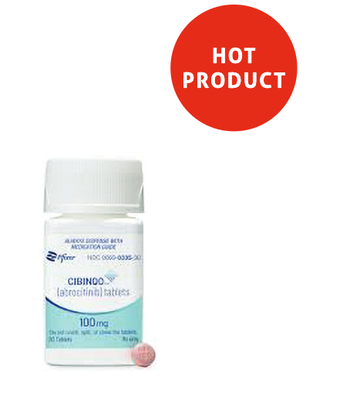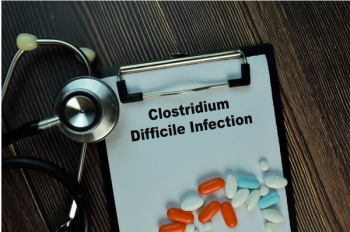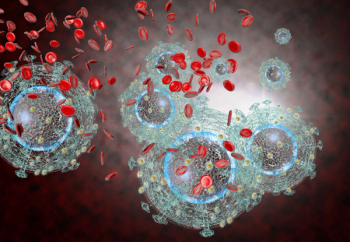
In the initial cohort, 63% of patients with advanced melanoma achieved an objective response rate, including 6 who had a complete response and 19 who had a partial response to the combination of fianlimab and cemiplimab.

In the initial cohort, 63% of patients with advanced melanoma achieved an objective response rate, including 6 who had a complete response and 19 who had a partial response to the combination of fianlimab and cemiplimab.

Products include a new FDA-approved treatment for dermatitis in younger individuals and a continuous glucose monitoring sensor system.

Adagrasib is a RAS GTPase family inhibitor with objective response rate in patients with certain types of locally advanced or metastatic non–small cell lung cancer (NSCLC).

Study findings suggest surveillance and prevention programs are needed for this common and deadly complication of hospitalization.

Study shows 18.4% of patients with relapsed or refractory chronic lymphocytic leukemia treated with lisocabtagene maraleucel achieved a complete response (CR), with median duration of CR not reached at median follow-up of 21.1 months.

A professional with a newly-minted pharmacy doctorate degree today has many options for a rewarding career.

Individuals administered oral semaglutide 50 mg achieved a statistically significant weight loss of approximately 17.4% after 68 weeks, according to Novo Nordisk.

Untreated hearing loss can affect communication, loneliness, and lead to severe illness, such as dementia.

Sue Ojageer discusses the new coloring book she created to explore different pharmaceutical career paths.

Cases discuss triglyceride levels, supplement use, and more.

Cases address gastrointestinal issues and alcohol abuse.

Multiple myeloma treatment selection is critical due to the potential for developing treatment resistance over time to the currently prescribed drugs.

In Greece, the stark increase in Clostridioides difficile (C. diff) incidence cannot be explained by a rise of antimicrobial use during the pandemic.

With no treatments currently FDA approved, patients arrive at the hospital with no options for treatment beside waiting for the intoxication to pass.

Bictegravir/emtricitabine/ tenofovir alafenamide tablets (B/F/TAF) provides long-term virologic suppression for nearly 100% of patients.

This is the first clinical evidence to show that stimulating the programmed cell death protein 1 (PD1) inhibitory pathway is beneficial for rheumatologic disease.

Program Chair Ryan Haumschild, PharmD, MS, MBA, discussed what attendees can look forward to at the inaugural Oncology Pharmacists Connect meeting.

Patients with depression require long-term treatment and supportive care, either with medications or non-pharmaceutical options.

Decentralization has already been shown to streamline clinical trials, but it also has the potential to improve the broader health care ecosystem.

Although an established standard of care for migraine prophylaxis exists, the current protocol is not without significant shortcomings.

The steroid could be more effective for veterans with post-traumatic stress disorder who do not have a history of traumatic brain injury.

With so many radical developments in medicine and technology unfolding at once, the role and potential of the pharmacy as we know it is evolving at breakneck speed.

Overweight or obesity between middle and later adulthood had a statistically significant risk for noncolorectal gastrointestinal cancer.

Research has shown these programs can increase the number of patients who can access targeted treatments.

This marks the fourth drug, and first oral antiviral pill, approved by the FDA to treat adults with mild-to-moderate COVID-19.

It is the second anti-TNFα biosimilar approved for use in the US.

Technicians should take advantage of opportunities to work at a higher level of practice, build their careers.

Women with recurrent urinary tract infections (UTIs) are often on and off antibiotics for years, and even decades, as the only treatment available in health systems for treating UTIs.

Acinetobacter are gram-negative human pathogens that infect individuals who are critically ill, which can result in severe pneumonia and bloodstream infections.

Eating regimen shows many health benefits, but the diet may not be appropriate for all patients.